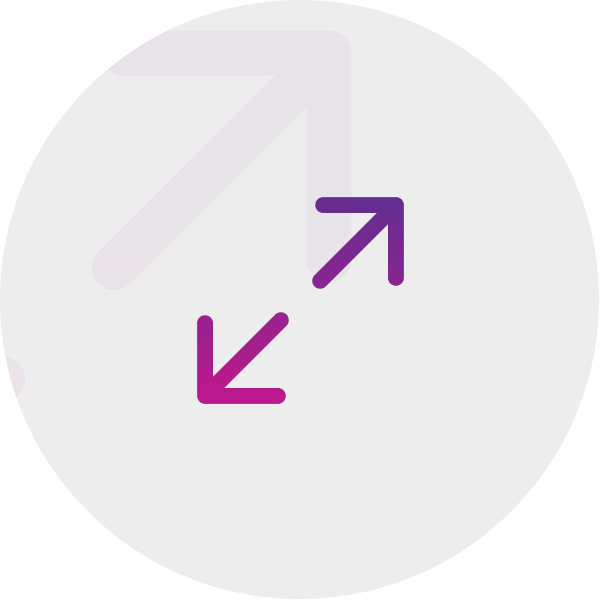Understanding some of the words you might hear at your appointment with us
Patients can often find discussing treatment options overwhelming at times. This can be because Orthodontists use a range of terms that can be confusing if you’re not familiar with them. Understanding what each of the terms mean can help you prepare questions for your Orthodontist as a patient or parent of a patient, and make you feel more at ease starting your journey.
With that in mind, our Gold Coast Orthodontists have put together cheat sheet full of key orthodontic words you should try and familiarise yourself and/or your child with in the lead up to starting treatment. Having a broad understanding of the terminologies can help to ease any stress or anxiety that comes with starting something new in life!
Terminologies
Power chains
Power chains are connected string made of elastic. They attach to brackets to apply more power than the brackets and archwire alone. Power chains can run all around the teeth to close spaces or between selected teeth to move teeth around the archwire like a bead on a bracelet. Treatment time may decrease when power chains are used in some cases. They’re particularly effective in closing gaps after a tooth is extracted, however, they can also be used to correct misaligned and crooked teeth.
Archwire
The archwire is the component of the Braces that does most of the work – it’s the wire that connects the brackets and bands together and aligns the teeth. Some archwires are flexible to align teeth whilst others are more rigid to establish the shape of the whole set of teeth and the teeth may be moved around the archwire. Upper and lower teeth can then be shape matched so that they fit together perfectly.
Banding & Bonding
Banding and bonding is a two-step process when starting your Braces treatment. Banding involves placing separators between the back teeth to ensure there is enough space to fit the metal band around the entire molar.
Braces or brackets are applied (bonded) to the teeth. The Braces may be directly applied individually to the teeth with a plastic based dental cement. Once the brackets and bands are attached, the cement is cured/set using a high density light. Every case is different, not every patient that has Braces requires orthodontic bands.
Indirect Bonding
Indirect bonding is the fastest way to apply brackets. Before the appointment, a mould is taken of the patient’s teeth and the brackets set up on a model. The brackets are covered with a silicone tray and then picked up off the model and transferred to the patient’s mouth all at once. A plastic based glue is applied to each bracket. After conditioning the teeth in preparation for the bracket application, the tray is fitted over the teeth and held in place while the composite is cured with high density light.
Elastics
While Braces and Invisalign are efficient at moving teeth, they sometimes need a helping hand with elastics to close spaces or address the bite relationship. Attached to the brackets of Braces (for Braces) or to a button for Invisalign Clear Aligner treatment, the elastic bands attach from one jaw to the other or between front and back teeth in the same jaw. They apply pressure to move individual teeth or a group of teeth in a specific direction. If the use of elastics is incorporated into your treatment, it’s really important to use them as directed! A common cause of treatment delays is patients not wearing their elastics as directed, or for the time directed by the Orthodontist!
Widening Plate
A widening plate (or palatal expander – being that it is commonly applied to the palatal/upper teeth) are predominantly used in growing children who have a narrow upper jaw and crowded teeth and are young enough. By increasing the circumference of the palate, the perimeter of the arch increases, providing more space for teeth and the smile width can be increased. Expanders are custom made appliances that are fitted at the roof of the mouth, near the back teeth. A special key is used to widen the arch in small increments.
Temporary Anchor Devices (TADS)
The anchor device is a small titanium alloy pin or implant attached to the bone during treatment. The screw-like device is needed when there is no viable tooth to use as an anchor or if an anchor tooth is at risk of moving too. The device is only kept in place for a small-time during treatment to help move teeth into place. The use of TADS may reduce treatment time, eliminate the need for elastic bands and have increased the range of achievable tooth movements and can address some problems that once required a combination of orthodontics and oral surgery. Your Orthodontist will assess the need and application of a TAD on a case-by-case basis, as they’re used for a very specific purpose and not all patients will need them to achieve their smile result.
Bite Turbos / Bite Correctors
Bite turbos (or Bite Correctors) may be used in your orthodontic treatment if your bite has the potential to impact one or more of your brackets. They’re a small, flat wedge that is bonded to one or more of your teeth to help minimise direct bracket-on-bracket contact. These bite problems can also be treated with elastics but the bite corrector are usually more efficient at avoiding bracket-on-bracket damage. The use of bite turbos is determined by your Orthodontist on a case-by-case basis and aren’t required for all patient treatments.
Retainers
In most cases, Braces or Invisalign stay on teeth for 9 – 24 months to move teeth into their desired position, but they aren’t enough. Retainers are needed to continue the good work of Braces to hold the teeth in position. It doesn’t matter how long a patient wears Braces or Invisalign, or the type of treatment they had, teeth naturally want to return to their old position. There is a natural tendency for teeth to become slightly irregular with age even if people have never had Braces. But a retainer, (if worn as directed by your Orthodontist) can ensure they won’t move back to their original position or become irregular with age.
Retainers come in two kinds – fixed and removable.
Bonded / Fixed Retainers
Many Orthodontists recommend a Bonded Retainer straight after finishing your treatment. A thin, pharmaceutical wire is placed behind the teeth front 6 upper and lower teeth where it can’t be seen. Your bonded retainer will help keep your teeth in their final position for as long as it’s there for. It’s important to remember to floss properly to avoid food and debris getting caught in and around your bonded retainers!
Removable Nighttime Retainers
When Braces or Invisalign attachments are removed, it’s the riskiest time for teeth to move back. Wearing a removable retainer while you sleep will hold teeth in the correct place – think of it as a double protection working hand-in-hand with your bonded retainers. Most patients will wear their retainers intermittently for life to minimise any significant tooth movement.
Separators
Before Braces are applied, our Orthodontists will start the process by fitting separators. The small elastic bands are placed between the back teeth to separate them slightly. This extra space between the teeth allows the Orthodontist to easily fit the thin metal bands that act as anchors. A separator may fall out before they’re due to be removed on the day the Braces are applied.
Staining
Teeth staining occurs when patients don’t brush their teeth properly while wearing Braces. Food is more likely to be stuck between teeth and around the brackets for patients with Braces. Consuming certain food and drink that are heavily coloured daily can also increase the likelihood of staining. Foods and drinks high in sugar such as soft drink, orange juice, lollies are some of the worst offenders for staining. Try to keep consumption to a minimum and brush your teeth thoroughly soon after eating or drinking to remove the sugar from your mouth.
Careful brushing and flossing while wearing Braces can help to eliminate the risk of teeth staining. Paired with regular trips to the dentist for a professional clean, you can help ensure your teeth are a consistent white colour when the Braces come off.
Wax
Dental or Orthodontic wax is designed to cover brackets that are aggravating the inside of the mouth. It’s often used by new patients, while their mouth adjusts to the Braces. A small amount of wax is placed over the bracket to provide relief. When a patient eats or brushes, the wax comes off, and a new piece of wax may be needed in its place. The wax is harmless if swallowed.
Brace Relief Gel
Brace Relief Gel is a fast acting anaesthetic gel that also offers overnight healing of raw gum or cheek lesions. Made with 9% benzocaine, natural myrrh, natural mint flavour and healing oils, Brace Relief Gel offers a soothing solution for offending brackets and other irritations.
If you’re ever unsure of an orthodontic term or process, be sure to ask one of our Gold Coast Orthodontists! We’re always happy to provide our patients with more information.
Looking for the best orthodontic treatment?
Look no further than Queensland’s #1 Invisalign Clear Aligner Provider
Contact one of our Dental clinics today for your perfect smile:
Medland Orthodontics Benowa
Medland Orthodontics Robina
Medland Orthodontics Helensvale
Medland Orthodontics Upper Coomera






